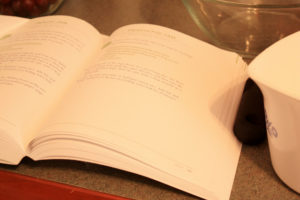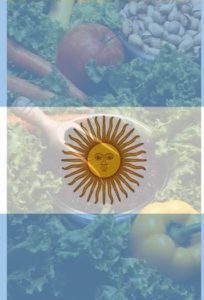
Here at GLOBALHealthPR, we go to all ends of the earth to deliver recipes for successful global and regional communications programmes to our clients. With offices in more than 40 countries, we know how to find the right mix of local insights and ingredients in order to satisfy the unique tastes and needs of each programme.
In the spirit of the holiday season, we’re sharing some of the traditional recipes that are enjoyed in our local markets around this time of year, delivered by our expert agency partners. Bon Appetit!
Americas
Argentina – Vitel Tone
Italian (peidmontese, to be specific) in origin, Vitello Tonnato or Vitel Tone as it’s called in Argentina is a chilled summertime dish traditionally served at Christmas. Vitel Tone is prepared at least a day in advance, when veal is braised and sliced thin then covered in a thick mayonnaise of tuna with oil and egg yolks, as well as other seasonings. The veal may then be chilled for up to five days to develop the flavour before it is served.
http://www.196flavors.com/2015/12/23/argentina-vitel-tone/
Brazil – Panettone
Panettone is a tall, spongey sweet bread stuffed with candied fruits and raisins, originating in Milan but served at Christmas and the New Year in Brazil, Argentina, Spain and many other countries. Panettone is left to rise for more than 20 hours, giving it the distinctive cupola-like shape. There are a number of colourful myths involving the invention of panettone, ranging from a priest’s love of his hat to a wedding officiated by Leonardo di Vinci.
http://www.myrecipes.com/recipe/panettone-italian-christmas-bread
Canada – Tourtière
A favourite in Quebec and across Canada, tourtière is a meat pie of diced pork or veal of beef. The exact filling depends on what is regionally available. On the coast, fish such as salmon may replace the meats. The slow-cooked deep dish pie may have originated in Quebec, but by the 19th century Quebecois immigrants to the northeastern United States had brought tourtière with them. Beyond differences in meat, some regional variants include potatoes or various spices, and condiments range from ketchup and mustard to maple syrup and mango chutney.
http://blog.kingarthurflour.com/2010/12/17/holiday-baking-traditions-tourtiere/
Mexico – Ponche Navideño
Ponche, a hot punch consisting of local fruits including tejotes, apples, prunes and pears as well as hibiscus, walnuts, raisins and cinnamon, is traditionally served at Christmas Eve celebrations, and the posadas, a nine day celebration leading up to Christmas. Ponche is frequently served warm, but can be chilled to taste, and can include liquor like tequila, rum or brandy for adult holiday festivities.
http://www.themijachronicles.com/2010/12/how-to-make-ponche-the-traditional-mexican-christmas-punch/
United States – Mincemeat Pie
Mincemeat pie originated in the British Isles centuries ago, as crusaders brought back with them spices and recipes for sweet meat and dried fruit pies. Over time, they became a Christmas tradition around the Anglophone world. In the U.S. they are usually eaten as full sized pies, but smaller individual pies are not uncommon. Oftentimes, modern mince pies skip the meat entirely, containing only fruit. Many families will serve the pie with Hard Sauce, so called due to the sherry mixed in with the butter and sugar, hence “hard”.
http://www.foodnetwork.com/recipes/alton-brown/mincemeat-pie-recipe2.html
Europe
Denmark – Pickled Herring
Called Inlagd Sil in Danish, pickled herring is traditional holiday fare in Denmark and across the Nordic region and often paired with akvavit, a spiced spirit. Pickled herring has been a northern European tradition since the middle ages and is used as a way to store and transport fish without it spoiling. The herring is served on rye, crispbread, sour cream or potatoes depending on the flavouring given to it during the curing and pickling process, which can include mustard, lingonberries, onion or garlic.
http://honest-food.net/2011/03/08/swedish-pickled-herring/
France – Foie Gras
Foie Gras, as defined by French law, is a duck or goose liver that has been fattened (up to 10 times its natural size) through the forced feeding of corn through a feeding tube. The techniques to force-feed the birds can be traced back all the way to 2500 BCE Egypt. Due to the lengthy and delicate production process, foie gras is considered a dish for special occasions, including Christmas and New Year’s Eve. Traditional French preparations are served cold, but the use of hot preparations has been increasing.
http://www.seriouseats.com/2012/12/the-food-lab-how-to-make-a-foie-gras-torchon.html
Germany – Roast Duck
Duck is the traditional centerpiece of a German Christmas Eve dinner. In addition to the duck, classic sides include red cabbage and potato dumplings. There are two schools of thought on the preparation of duck. Traditionalists cook it low and slow with, celery and apples in the cavity. Alternatively, some cooks simmer the duck in broth and then finish under very high heat in the oven.
http://www.thehungrymouse.com/2009/02/11/the-best-way-to-roast-a-duck-hello-crispy-skin/
Poland – Barszcz
Barszcz is a sour, bright crimson beetroot soup served during the holidays in Poland. Dumplings filled with meats, mushrooms and many other proteins and cheeses are served in the soup as well. The earliest variants of what would come to be known as Barszcz or Borscht were made with hogweed, and later versions would include poppy seeds, almonds, rye brand or barley in addition to the original hogweed and beetroot.
Portugal – Bacalhau
Bacalhau is the Portuguese word for salted and dried cod. There are thousands of ways to prepare bacalhau, and yet it is ironically the only fish that is not consumed fresh in Portuguese cuisine. Bacalhau has spread across the Portuguese world, including Cape Verde, Angola, Macau and Brazil. The iconic Christmas recipe for bacalhau is boiled with garlic and served with cabbage, potatoes, carrots and eggs. A friendly note of advice: be sure to soak the bacalhau in water for at least a day before cooking, or else you are in for an extremely salty meal.
Spain – Turrón
Turrón is a remarkably simple but delicious sweet treat for the holidays. It consists of only four ingredients: honey, sugar, egg whites and nuts. Together they form a rich nougat, which is cut into bars to be served. The existence of turrón can be traced back to the 15th century. Depending on the amount of nuts and the addition of other ingredients to the core of four, turrón can range from crisp to chewy to the bakers preference.
http://nourishedkitchen.com/turron-de-navidad/
United Kingdom – Christmas pudding
Christmas pudding, sometimes called plum pudding despite the lack of plums (plums were a pre-Victorian term for raisins), can trace its origins back to medieval England. The pudding is made of dried fruits held together by eggs with treacle, or molasses, and flavored with spices and brandy. Because of the high alcohol content, a steamed Christmas pudding can be aged for months, and is sometimes “flamed” or set alight in an electric blue pyrotechnic display to burn off the alcohol and add flavour.
http://www.jamieoliver.com/recipes/fruit-recipes/my-nan-s-christmas-pud-with-vin-santo/
Asia Pacific
Australia – Shrimp BBQ
There are few things more iconically Aussie than Shrimp (aka prawns) on the Barbie, and with Christmas coming in Australia’s summer months, it’s only fitting that an outdoor barbeque favourite is also a Christmas tradition. The classic recipe is pretty straightforward: stick the shrimp on the grill and coat with a glaze of garlic, honey, chili sauce and a citrus, though many recipes will call for a little bit of marinating. For dessert, pavlova, a meringue (named after the ballerina) with fruit and whipped cream, is a favourite.
http://www.food.com/recipe/succulent-prawns-for-the-barbie-15548
Hong Kong – Tangyuan
Tangyuan are sweet rice dumplings, that can be served either filled or unfilled and bite sized or large. Fillings include chocolate paste, fruit, peanuts or rock candy, though the most common filling is a paste made of ground black sesame mixed with sugar and lard. The name tangyuan is a homophone in Chinese for union, and as such they are served not only during the traditional Yuanxaio lantern festival and Winter Solstice, but also at family reunions and weddings.
http://www.chinasichuanfood.com/tang-yuan-recipe-black-sesame-filling/
India – Sesame Ladoo
Til Ladoos, or sesame ladoos are a popular treat served around the holiday of Makar Sankranti, celebrating the changing seasons in India and around the world. Ladoos are made from roasted and crushed peanuts, coconut and sesame stuck together with jaggery (cane sugar mixture) caramel. The mixture is then rolled into balls and served warm or at room temperature.
http://www.vegrecipesofindia.com/til-ladoo-recipe-sesame-seeds-laddu/
Singapore – Yu Sheng
Yu Sheng is a raw fish salad with shredded vegetables and condiments popular on the Chinese New Year. Salmon, mackerel and occasionally abalone are popular choices of fish, with the veggies consisting of carrots, radishes, red peppers, turnips, ginger, cabbage and more. Toppings include plum sauce, sesame oil and seeds. Once the dish is made, everyone gathers around the table with their chopsticks and tosses the salad as high as possible. Sometimes called Prosperity Toss, the name itself is a bit of a pun, with Yu Sheng (raw fish – 鱼生) being a homophone for Yu Sheng (prosperity – 余升), a play on both the tossing of the salad and the belief that eating Yu Sheng brings good health and success.
http://www.noobcook.com/yu-sheng-chinese-new-year-raw-fish-salad/
We hope you fill your stomachs with great food and your hearts with love and joy this holiday season. Best wishes in 2017 from the GLOBALHealthPR family.

